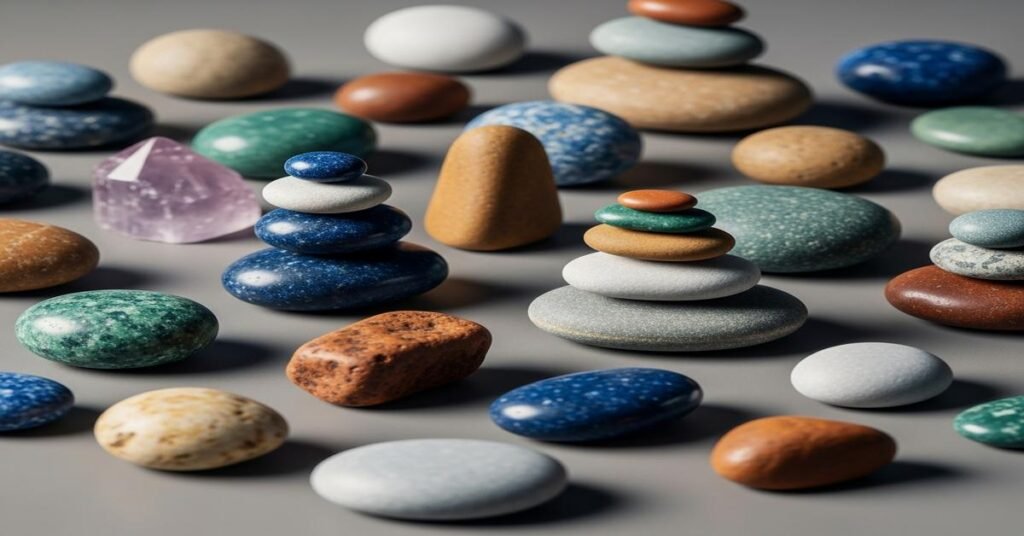Designing a unisex jewelry set means choosing stones, metals, cuts, and proportions that read as strong and versatile rather than gendered. A successful set balances scale, color, and durability so each piece can be worn alone or together, day-to-night. Below I explain practical choices and give exact examples you can use when buying or designing a set that will feel powerful and neutral — no stereotypes required.
Start with the stone family: pick for durability and tone. Why this matters: daily wear needs hardness and stable color. Harder stones resist scratches; stable colors read as intentional rather than flashy.
- Top picks for unisex sets: sapphire (9 Mohs), ruby (9), spinel (8), tourmaline (7–7.5), garnet (6.5–7.5), onyx (6.5–7), and lab-grown diamond or moissanite (9–9.5). Choose based on wear and budget.
- Avoid or use cautiously: opal and pearl (soft, 5–6.5 Mohs), emeralds with heavy clarity treatment (can be brittle). Use these only in protected settings and with care instructions.
- Color families that read unisex: deep blues, forest greens, charcoal/black, warm cognac, and pure colorless. These tones read neutral because they are saturated and restrained rather than pastel or overtly floral.
Choose cuts that read architectural, not decorative. Why: cut affects silhouette and perceived weight. Clean geometry reads masculine-neutral.
- Round brilliant (6.5mm ≈ 1.0 ct) is timeless and versatile.
- Oval (7×5mm ≈ 1.0 ct) and cushion (6×6mm ≈ 1.0 ct) keep presence without fuss.
- Emerald and step cuts (7×5mm emerald ≈ 1.0 ct) offer a planar, structural look that feels modern and restrained.
- Baguette accents make a set feel architectural when used sparingly (3×1.5mm each, for example).
Metal choices: durability, color, and finish matter. Why: metal tone changes how color and form are perceived.
- Platinum 950 (95% Pt): extremely durable, hypoallergenic, and holds polished finishes. Use for central pieces if budget allows.
- 14k white gold (58.3% Au + alloys, often rhodium plated): strong, brighter white than 18k, lower cost than platinum. Note rhodium replating every few years if worn daily.
- 14k yellow or 18k warm mixes (58.3% or 75% Au): pairs well with warm stones like garnet or cognac diamonds. 14k trades some warmth for strength; 18k is richer but softer.
- Sterling silver 925 with a matte or brushed finish: budget-friendly and modern. Use heavier gauges (e.g., 3–5mm bands) to avoid bending.
- Finish choices: brushed/matte for understated power; high polish for formal wear. Why: matte reduces glare and reads more architectural; polish draws attention.
Settings and proportions for everyday strength. Why: low-profile, secure settings survive activity and maintain the unisex look.
- Bezel or flush settings — best for daily wear. They protect the girdle and give a solid silhouette.
- Prongs (4 or 6) with low crowns allow more light but keep height under 3–4mm for rings to avoid catching.
- Band width: Aim for 3–5mm for rings and signets in a unisex set. Narrower looks delicate; wider can read masculine — 3.5–4mm is a neutral sweet spot.
- Pendants: Keep the stone table-to-overall pendant ratio balanced. Example: a 10×8mm cushion (≈2.5–3.0 ct for denser gems) mounted in a low bezel on a 1.5–1.8mm chain looks substantial without being ornate. Chain length 45–55cm (18–22″) is versatile.
- Earrings: Stud sizes 4–6mm are subtle; 7–9mm read as statement. Use screw backs for security on heavier studs.
- Bracelets: Simple curb or flat link 4–6mm with spaced bezel stones (3–5mm each) keeps the look cohesive.
Putting the set together: two tested combinations. Why examples help: they show scale and how pieces interact.
- Example A — Blue sapphire neutral set (daily to dress):
- Ring: 6.5mm round blue sapphire (≈1.0 ct), 14k white gold low bezel, band 3.5mm, total ring height 3.5mm.
- Pendant: 8×6mm oval sapphire (≈1.5 ct), platinum bezel, 1.8mm chain, 50cm length.
- Studs: pair of 5mm round sapphires (≈0.5 ct each), screw-back studs in 14k white gold.
- Bracelet: 4mm curb with four spaced 4mm bezel-set sapphires (≈0.25 ct each) in white gold.
- Why it works: consistent color and low profiles make the set cohesive; sapphire hardness (9) ensures durability.
- Example B — Black onyx + diamond accent (strong, graphic):
- Ring: 8×6mm rectangular onyx (cabochon), 14k yellow gold signet-style bezel, band 4.0mm.
- Pendant: 10mm round onyx disk, flush-set 0.05 ct round diamond accent at center, 2.0mm chain, 55cm length.
- Studs: 6mm onyx studs with 0.03 ct diamond halo set flush in platinum posts.
- Why it works: opaque stone creates a bold plane; small diamond accents add light without feminizing the design.
Ethics, maintenance, and budget considerations. Why: transparency affects long-term satisfaction.
- Ethical choices: lab-grown sapphires and diamonds offer lower cost and traceability. Ask for chain-of-custody or recycled metal stamps when possible.
- Maintenance: avoid ultrasonic cleaners for emeralds and heavily treated stones. Clean with warm soapy water and a soft brush for most gems. Reflow rhodium on white gold every 2–4 years if worn daily.
- Budget ranges: A cohesive unisex set can start at $700–1,200 for silver/sterling with mid-grade stones, $2,500–6,000 for 14k gold with quality sapphires/spinels, and $6,000+ for platinum and larger natural stones. Why the gap: metal purity, stone carat and origin, and craftsmanship drive price.
Designing without stereotypes is about restraint, proportion, and material honesty. Choose stones for their durability and hue, prefer clean cuts and low profiles, and match metal and finish to the intended wear. When each choice has a practical reason — protection, balance, or tonal consistency — the result reads as purposeful and wearable by anyone.
I am G S Sachin, a gemologist with a Diploma in Polished Diamond Grading from KGK Academy, Jaipur. I love writing about jewelry, gems, and diamonds, and I share simple, honest reviews and easy buying tips on JewellersReviews.com to help you choose pieces you’ll love with confidence.

